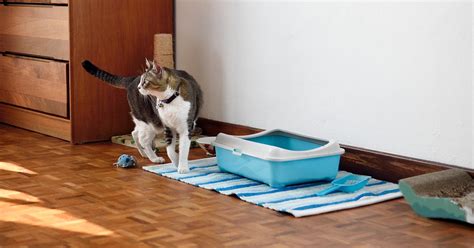Owning a cat brings a lot of joy, but also the responsibility of maintaining its hygiene, including its litter needs. As a cat owner, it’s vital to understand the basics of cat litter, from choosing the right type to ensuring it remains hygienic. In this comprehensive guide, we’ll delve into the world of cat litter, providing essential tips for keeping your pet happy and healthy.

Unveiling the Secrets of Cat Litter
Deciding on the most suitable cat litter for your feline friend involves considering various factors:
- Material: Clay, silica gel, pine, and recycled paper are popular choices.
- Texture: Fine, medium, or coarse grains offer different sensory experiences.
- Odor control: Some litters contain activated charcoal or baking soda to neutralize odors.
- Environmental impact: Biodegradable litters like pine or recycled paper are eco-friendly.
Mastering the Art of Litter Hygiene
Maintaining litter hygiene is crucial for your cat’s comfort and well-being:
- Daily scooping: Remove solid waste daily using a scoop designed specifically for cat litter.
- Regular replacement: Replace the entire litter every 2-3 weeks, or more frequently if necessary.
- Thorough cleaning: Empty the litter box completely and wash it with warm, soapy water and a disinfecting solution.
- Deep cleaning: Occasionally deep clean the litter box with bleach or other strong disinfectants, ensuring thorough rinsing afterward.
Cat Litter Hygiene: The Science Behind It
The importance of cat litter hygiene cannot be overstated:
- Prevents urinary tract infections: Clean litter reduces the risk of bacteria buildup, preventing UTIs.
- Promotes respiratory health: Regularly changed litter minimizes dust and allergens.
- Ensures mental well-being: A clean litter box provides a comfortable and stress-free environment for cats.
Litter Box Management: A Step-by-Step Guide
Creating a good litter box routine involves several steps:
- Number of boxes: Provide one litter box for each cat plus one extra.
- Box size: Choose a box large enough for your cat to move around comfortably.
- Location: Place the litter box in a quiet and private area accessible to your cat.
- Cleaning schedule: Establish a regular cleaning schedule and stick to it.
Comparing Litter Options to Choose the Best
The market offers a wide variety of cat litters, each with its unique advantages and disadvantages:
- Clay litter: Absorbent, affordable, but prone to dust and tracking.
- Silica gel litter: Highly absorbent, odor-controlling, but more expensive.
- Pine litter: Natural, biodegradable, but dusty and can be messy.
- Recycled paper litter: Eco-friendly, moisture-wicking, but can be less absorbent.
Frequently Asked Questions about Cat Litter
- How often should I scoop the litter box? Every day.
- How often should I change the entire litter? Every 2-3 weeks.
- How many litter boxes do I need? One for each cat plus one extra.
- How should I clean the litter box? Use warm, soapy water and a disinfectant solution.
- What type of litter is best for kittens? Fine-grained, unscented clay litter.
- What type of litter is best for older cats? Silica gel or recycled paper litter.
- How do I get my cat to use the litter box? Place the box in a quiet location and gradually introduce your cat.
- How do I deal with a cat that refuses to use the litter box? Contact your veterinarian to rule out medical or behavioral issues.
Reviews of Popular Cat Litters
- Arm & Hammer Clump & Seal: Effective odor control, but can be dusty.
- Fresh Step Triple Action: Neutralizes odors and reduces tracking.
- Purina Tidy Cats Breeze: Unique pellet system that separates liquids from solids for easy cleaning.
- Ever Clean Multi-Cat: Clumping formula with activated charcoal for odor control.
Conclusion
Cat litter is an essential aspect of cat ownership. By selecting the right type and maintaining proper hygiene, you can ensure your feline companion’s health, happiness, and a pleasant living environment. Remember to prioritize regular scooping, replacement, and cleaning to prevent odors, infections, and behavior problems. Embrace the information and tips provided in this comprehensive guide to become a responsible and proactive cat owner.





















